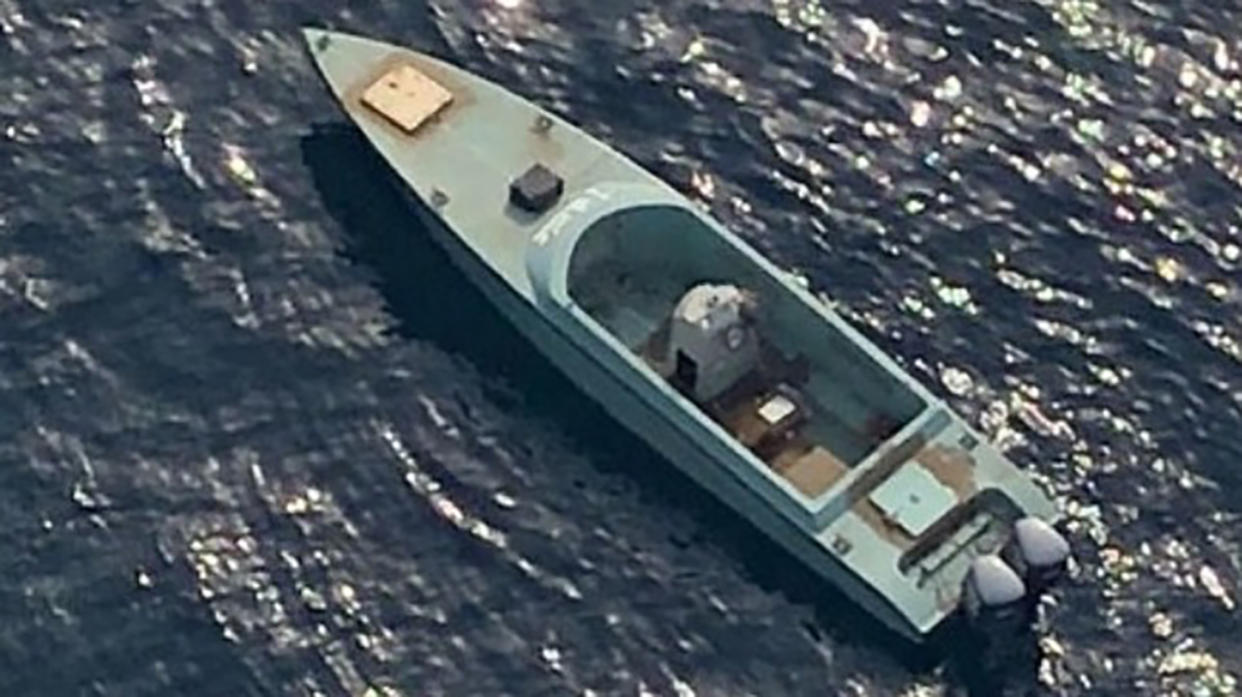Houthi Drone Boat Strikes Ship For First Time Since Red Sea Crisis Erupted

The Liberian bulk carrier Tutor was struck by a Houthi uncrewed surface vessel (USV) while transiting the Red Sea, the first such successful strike since the Yemen-based rebel group began attacking shipping in the region, an official with the Ambrey maritime security firm told The War Zone. “It’s a dead ship now,” Joshua Hutchinson, Ambrey’s Managing Director of Risk and Intelligence confirmed to The War Zone. “Salvage operations are required.” Hutchinson’s statement bolstered information provided by the Royal Navy-managed United Kingdom Maritime Trade Operations that a ship was struck 66 nautical miles southwest of Al Hudaydah, Yemen. UKMTO said that “the vessel was hit on the stern by a small craft” described as being “white in color and five to seven meters in length.” The ship’s master “reports the vessel is taking on water, and not under command of the crew. Military authorities are assisting.” It was then struck again by a missile, Hutchinson told us, confirming a subsequent UKMTO report. UKMTO WARNING INCIDENT 083 ATTACK UPDATE 003Update 003: The Master reports the vessel was hit for a second time by an unknown airborne projectile.https://t.co/fX3hWupPWO#MaritimeSecurity #MarSec pic.twitter.com/O656WZaEZ2— United Kingdom Maritime Trade Operations (UKMTO) (@UK_MTO) June 12, 2024 We’ve reached out to the Pentagon, White House, U.S. Central Command and the European-run Operation Aspides maritime security task force for additional information and will update this story with any details provided. The Yemeni militant group has used kamikaze drone boats before — they actually pioneered the operational use of kamikaze USVs years ago. We first reported about this capability in January 2017, when an explosive-laden Houthi USV struck a Saudi frigate. Iran developed various crude kamikaze USVs years ago and those weapons soon migrated to their Houthi proxies, which used them first operationally. A U.S. Department of Defense briefing slide from 2017 highlighting Iranian-supplied components of a captured Houthi suicide drone boat, referred to as the Shark-33, including a guidance system with GPS-assisted navigation and optical sensor capabilities. American authorities said at the time that it was capable of tracking and engaging moving targets, as well as stationary ones. DOD Government of Saudi Arabia A video of the 2017 Houthi USV strike on a Saudi frigate operating in the Red Sea: As we reported back in January, the Houthis began launching USVs at Red Sea shipping in its current campaign, but had yet to hit any vessels until today. The Houthi drone boat in the January incident “detonated in international shipping lanes,” Vice Adm. Brad Cooper, Commander of U.S. Naval Forces Central Command (NAVCENT), told reporters, including from The War Zone, at the time. “Fortunately, there were no casualties and no ships were hit, but the introduction of a one-way attack USV is of concern.” Ukraine has made kamikaze USVs a signature weapon in its efforts to repel Russia from its borders, with repeated strikes on Russian shipping. You can see video of one of those attacks below. These weapons are far more advanced than what we have seen the Houthis use prior to the current Red Sea crisis, but it’s likely their capabilities have evolved significantly, as well. U.S. and allied naval forces have repeatedly destroyed USVs that threaten shipping in the Red Sea and Gulf of Aden in recent months, with helicopters being a primary weapon for doing so. Now the Houthis, after months of trying, have finally hit their target. This is a developing story. Update: 2:58 PM Eastern – In an email to The War Zone, officials at Operation Aspides confirmed our reporting: 1. On 12 June 2024, a MV was hit by a Houthi’s USV in the Red Sea. 2. The name of the Greek-owned cargo MV is “TUTOR” . 3. The MV was not under the close protection of EUNAVFOR ASPIDES. 4. The responsible authority to respond, is the Maritime Rescue Co-ordination Cell of Eritrea. Contact the author: [email protected]
